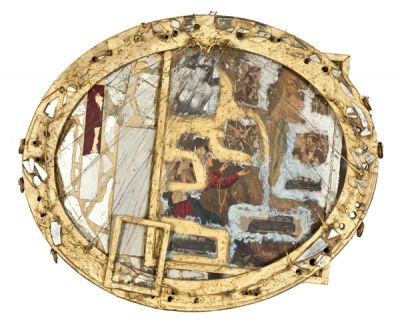023
Stano Filko (1937 - 2015)
Dimensions: 68 x 52 cm
Sign: S. FIlko 1959
Date: 1959 - 1964
Framing: Framed
Contemporary Art Auction
18 Apr -
Opening bid: 10000 €
Hammer price: 10000 €
Provenance: private collection
Exhibited: Filko´s Ark and Up-To-Date Altars,
Pálffy Palace-Bratislava City Gallery, Slovak republic, 2008
Author informations:
Stano Filko was a key figure in the Slovak neo-avant-garde, associated primarily with environment, installation, happening, and action. He began his studies at the School of Applied Arts in Bratislava (1956-59) and later studied Monumental Painting at the Academy of Arts, Bratislava (Prof. Milly and Prof. Matejka, 1960-65). He emigrated from Czechoslovakia in 1981 to West Germany and the following year further to the United States. In 1990 he returned to Bratislava. Filko began his artistic practice appropriating maps as ready-made canvases and created work influenced by Concrete and Constructivist artists in the mid-1960s. His intricate visual systems created diagrams from everyday objects that were rich in symbolic meaning.
In his later series of conceptual statements, Asociácie [Association] (1968–69), Filko´s interest in transcendental philosophy, cosmology, and metaphysics—which could be seen as a response to the Leninist material ideology—was evident in his offset prints that mapped symbolic images and words. Many works in Association resemble calligrams—for example, one work parsed the linguistic relationship between the words "universe", "earth", "fire", "water", and "air" by organizing each word within a diagram written in Czech, German, Spanish, French, and Latin.
Filko was also a key figure in Slovak Actionism. In 1965, he wrote "Manifesto of ´HAPPSOC´ (Theory of Anonymity)" with theoretician Zita Kostrová and fellow artist Alex Mlynárčik—who was in dialogue with the Paris-based Nouveau Réalisme group. The tongue-in-cheek name was short for "happy society", or "happening" and "society", or "happy socialism". The HAPPSOC group questioned the status of artistic practice as autonomous and created work that intervened in everyday life. The manifesto showed the writers´ openness to perceiving reality as a work of art, declaring all of Bratislava as a Happening from 2-8 May 1965, in HAPPSOC 1.


